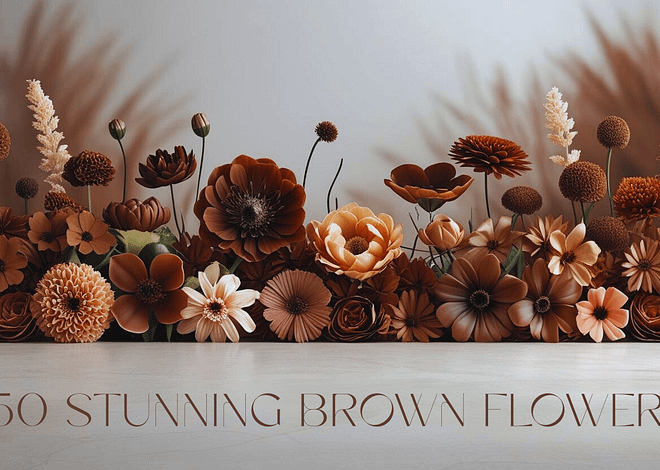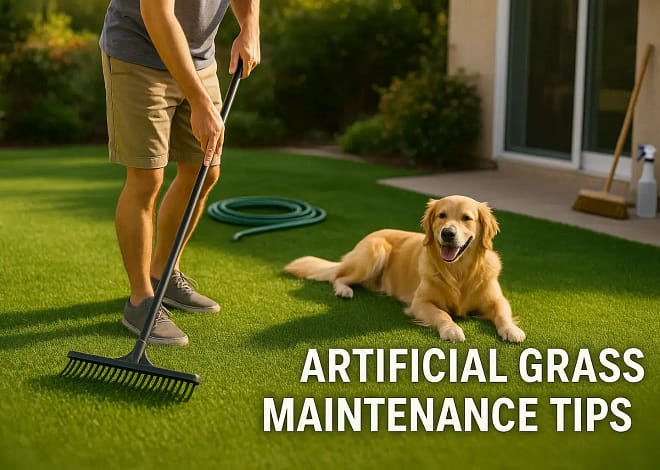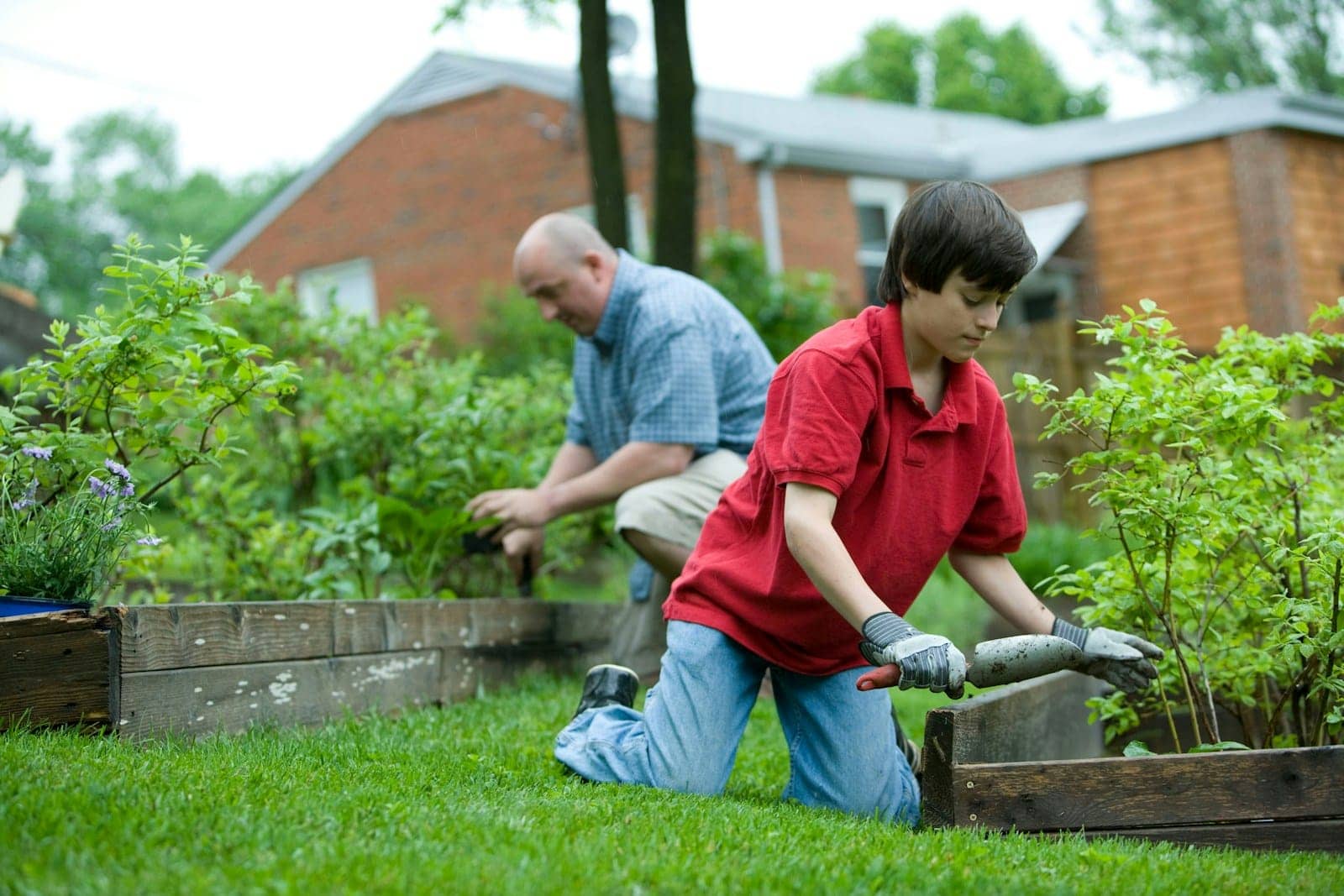
15 Reputable Sources for Fertilizers with High Potassium
Potassium is an essential nutrient for plants. If your soil is deficient in potassium, adding a fertilizer high in this nutrient can help your plants thrive. This article reviews 15 reputable fertilizer sources with high potassium content.
When the soil test shows your garden is low in potassium, it’s time to give your plants a potassium boost. Not to worry! There are so many ways to shower your plants with this gift from the earth. Take heart and be glad, for you can choose from a bounty of fertilizers bursting with potassium’s goodness. Consider sprinkling your garden with potassium chloride or sulfate to invigorate your plants. Or perhaps mix in some soothing cucumber skins, rich in potassium from the vine.
Other options abound, like kelp from the sea, ashes from the hearth, or meal from the soybean – all contain generous amounts of nourishing potassium. With so many natural sources available, you can pick the perfect fertilizer to spread potassium’s blessings throughout your garden. So breathe deep, and let your plants flourish with potassium aplenty!
When it comes to nurturing those gorgeous blossoms, potassium is your best buddy. You can get that potassium from all kinds of sources – bananas, eggshells, wood ash – use whatever you have on hand! Or pick up some bloom booster fertilizer packed with potassium goodness.
In this article, we’ll explore some top-notch fertilizers rich in potassium and how much potassium is in each. You’ll also learn how fast these fertilizers release their nourishing nutrients into the welcoming soil.
Let’s dive in and discover how to keep your garden thriving! With the right fertilizers, your garden will burst into lively, vibrant blooms.
15 Fertilizers with High Potassium
1. Potassium Chloride (Muriate of Potash)
Potassium chloride, also known by the name muriate of potash, is a valuable fertilizer. It contains a high concentration of potassium – typically 60-62% by weight. This abundant potassium is readily available to plants, leading to fast boosts in growth.
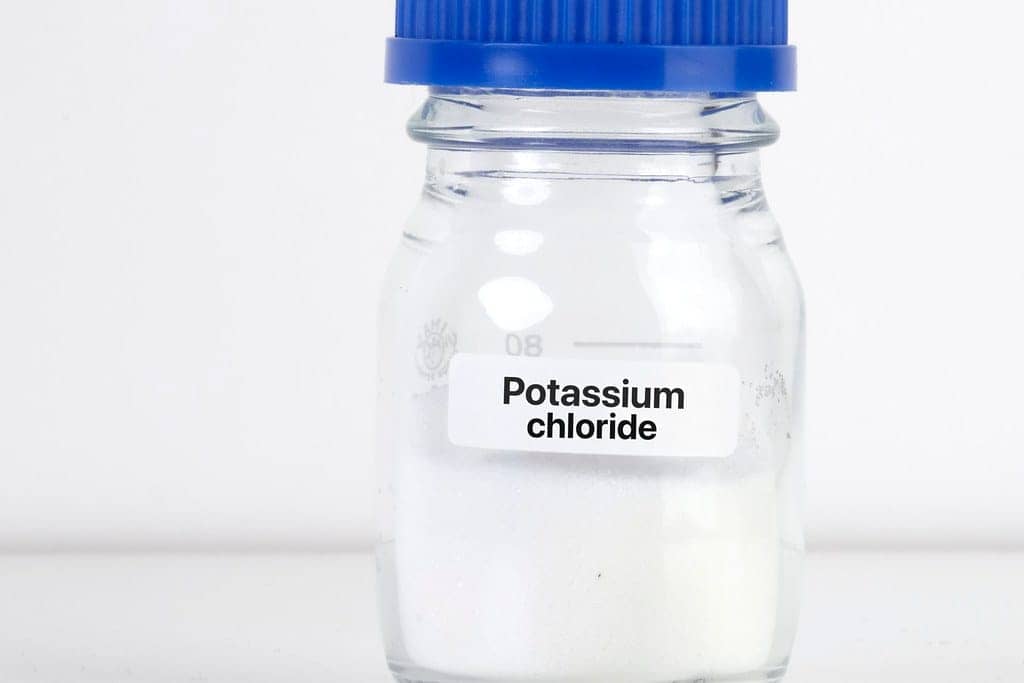
However, the chloride component means you’ll need to use potassium chloride carefully. Too much can potentially burn sensitive plants. With proper application, though, potassium chloride can work wonders on crops and gardens. Its quick potassium release helps plants grow strong and produce bountiful fruits and vegetables. So harness the power of potassium chloride, but do so with care. This essential fertilizer has much to offer!
2. Potassium Sulfate
When it comes to fertilizing your garden, potassium sulfate is a fantastic option to nourish your plants. With a 50% potassium content, this fertilizer provides a steady supply of this essential nutrient to help your plants grow strong. Unlike potassium chloride fertilizers, which release potassium quickly, potassium sulfate has a more gradual release curve that is gentler on plant roots.
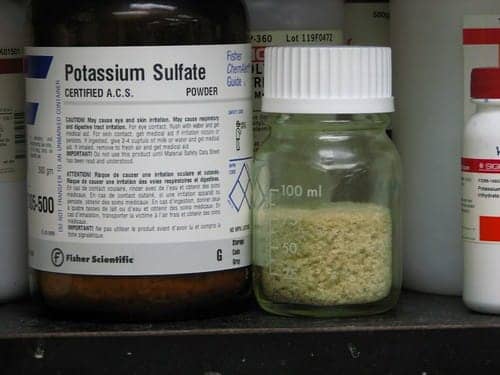
While it does cost more than potassium chloride, the slower release and softer impact of potassium sulfate make it worth the extra investment for your prized garden. So, if you’re looking for a potassium fertilizer that will tenderly feed your plants the nutrients they crave, potassium sulfate is a warmly recommended choice.
3. Burned Cucumber Skins
When searching for fertilizer for your plants, the last thing you would think to use is burned cucumber peels. In addition, they are hard to obtain unless you make them yourself!
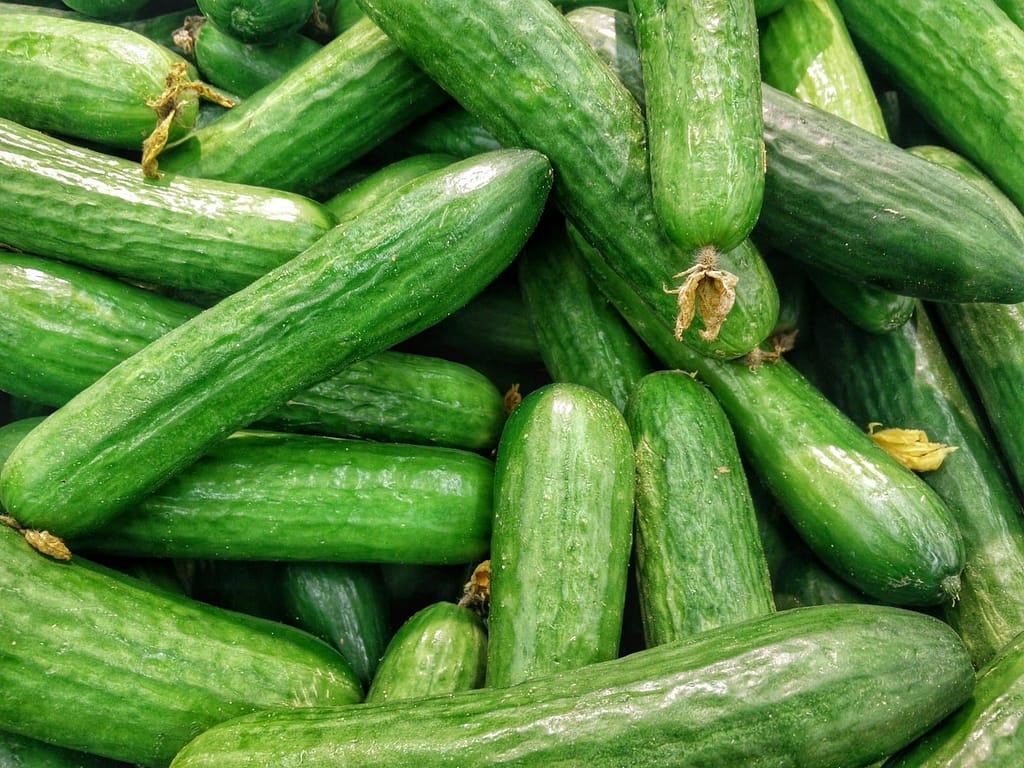
But this odd object is a natural supply of potassium for plants. It actually has a lot of potassium in it, possibly more than you know – 27% of the weight of burned cucumber skins is potassium. That indicates that, among the 15 fertilizers listed here, it has the third-highest potassium proportion.
Cucumber skins that have been burned have fast-released nutrients, which means that the nutrients break down quickly. Furthermore, finding them is not too difficult.
If you have any cucumber skins left over after peeling cucumbers for summer salads, ask your family or friends. You might also inquire about the availability of cucumber peels at nearby salad-serving establishments.
Cucumber peels that have burned also have 11% phosphorous by weight. They lack nitrogen, though, which is the one drawback of an otherwise excellent fertilizer. Cucumber skins can be added to your compost pile to help your plants grow more food if you don’t want to burn them.
4. Sulfate of Potash Magnesia (Sul-Po-Mag)
This fertilizer, also called potassium magnesium sulfate (or Sul-Po-Mag), has a potassium content of 22% by weight. Nearly as wonderful as charred cucumber skins, Sul-Po-Mag is a great supplement because of its high potassium level.
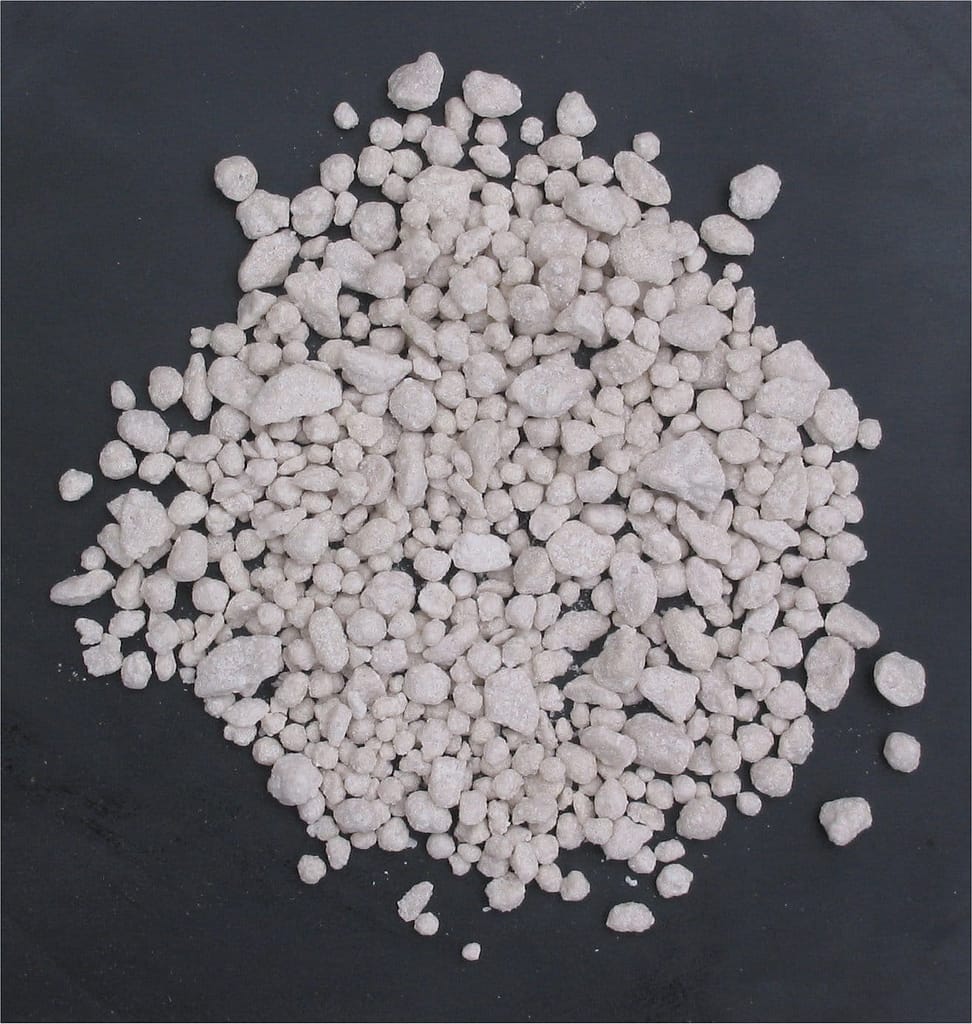
Magnesium sulfate is a particular kind of potash, meaning that potassium is soluble in water in it. In addition, 11% of its weight includes magnesium, which is beneficial if your plants lack magnesium and you don’t have any Epsom salt or don’t want to use any.
Note that there is no phosphorus or nitrogen in Sul-Po-Mag. As a result, it is not a balanced fertilizer. It does, however, have applications.
A decent starting fertilizer for maize is potassium magnesium sulfate, says the University of Minnesota Extension. It’s also an excellent method of adding magnesium without raising the pH of your soil.
5. Clay (Illite)
Clay, while a slow-release source of potassium for plants, is a natural choice to add this nutrient to soil in an organic garden. Though its potassium content of 3.5% to 8.3% by weight is less than fast-acting sources like burned cucumber skins or Sul-Po-Mag, the mineral still offers a steady supply. That’s because potassium gets trapped within the clay’s crystalline structure, according to the University of Maryland.
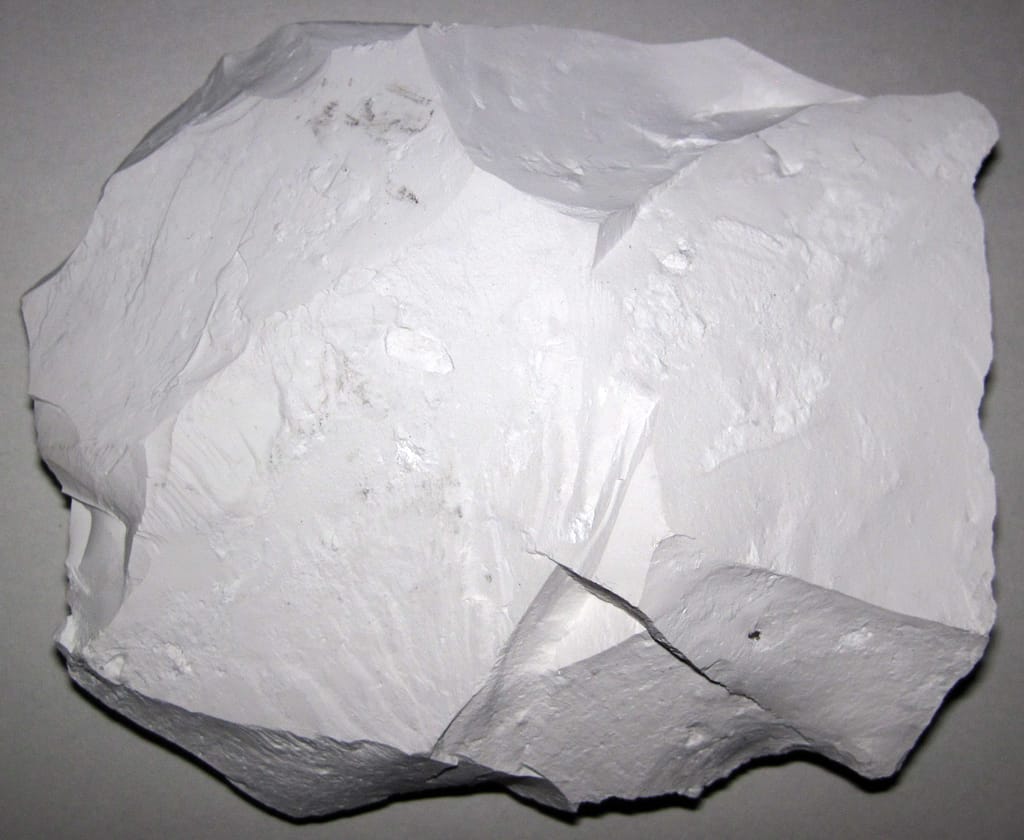
The clay’s nutrients only become available over time. While illite clay contains no nitrogen or phosphorus, making it an imbalanced fertilizer, it can sustainably maintain soil potassium levels without synthetic chemicals.
6. Kelp
Large seaweeds known as “kelp” grow in huge groups underwater and are occasionally referred to as “forests.” Brown in colour, kelp thrives in water that is high in nutrients.
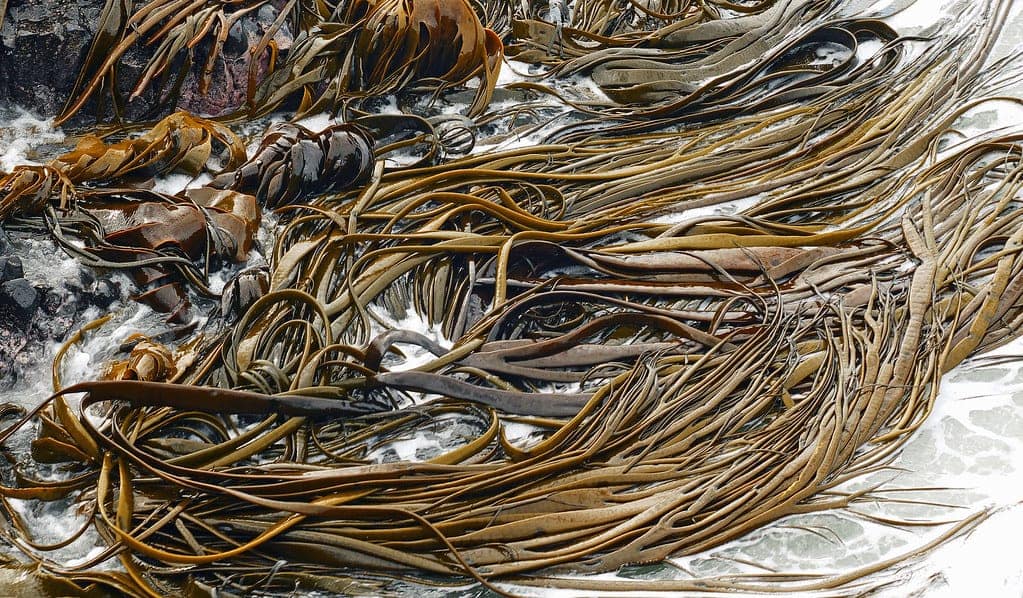
Kelp is a good source of potassium as a fertilizer because it ranges from 4% to 13% by weight. The form (powder, liquid, or meal) will determine the precise percentages of potassium.
By weight, kelp also has 0.5% phosphate and 1% nitrogen.
Due to its sluggish release speed, kelp releases nutrients gradually over an extended period of time as it decomposes. The effectiveness of kelp meal lasts for four to six months; in liquid or powder form, nutrients are released more quickly.
7. Wood Ash
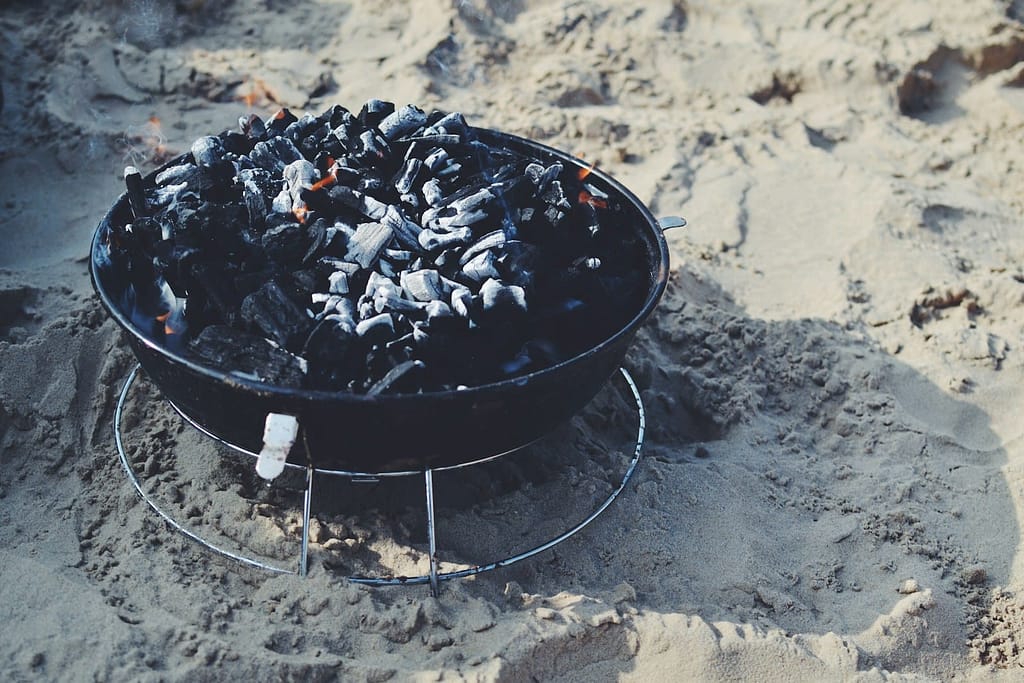
To put it simply, wood ash is the waste left over from burning wood. Depending on the kind of wood that was burned, wood ash will have varying amounts of nutrients. Wood ash typically has a weight percentage of 3% to 7% potassium. This adds to its value as a natural source of this vitamin.
Wood ash is a valuable source of several plant nutrients because it also includes some sulfur, magnesium, and phosphorus. However, as nitrogen is released into the atmosphere during wood combustion, wood ash is devoid of nitrogen.
Wood ash works quickly and lasts between one and four months. Because wood ash is alkaline (basic), it should not be added to soil that already has a high pH (find out how to run a soil test to be certain).
Additionally, use caution when applying ash from chemically treated wood. In this manner, you can keep poisons out of your garden.
8 Greensand
Greensand is a fascinating type of sandstone with a rich green hue. This verdant rock gets its vibrant colour from glauconite, a mineral that forms in marine environments. That’s why Greensand is often chock-full of fascinating fossils of ancient sea creatures.

Beyond its visual appeal, greensand has some handy properties. It’s porous, meaning it soaks up water and minerals like a sponge. As a fertilizer, greensand provides a slow, steady supply of potassium and phosphorus to feed plants over many growing seasons. While greensand doesn’t contain nitrogen, its mineral content and gradual nutrient release make it a valuable addition to the garden.
Applied lightly each season, just a sprinkling of this green granular rock can keep your plants happy and healthy for years to come. Greensand is one of nature’s treasures, bringing a splash of colour and a feast for plants.
9. Granite Dust
Granite, with its speckled hues of white, pink, and grey, is truly a gem among rocks. Though hard as stone, this igneous rock can be ground into a nurturing garden dust. Sprinkled around your plants, granite’s minerals – potassium, calcium, iron, manganese – are slowly released to enrich the soil for years.
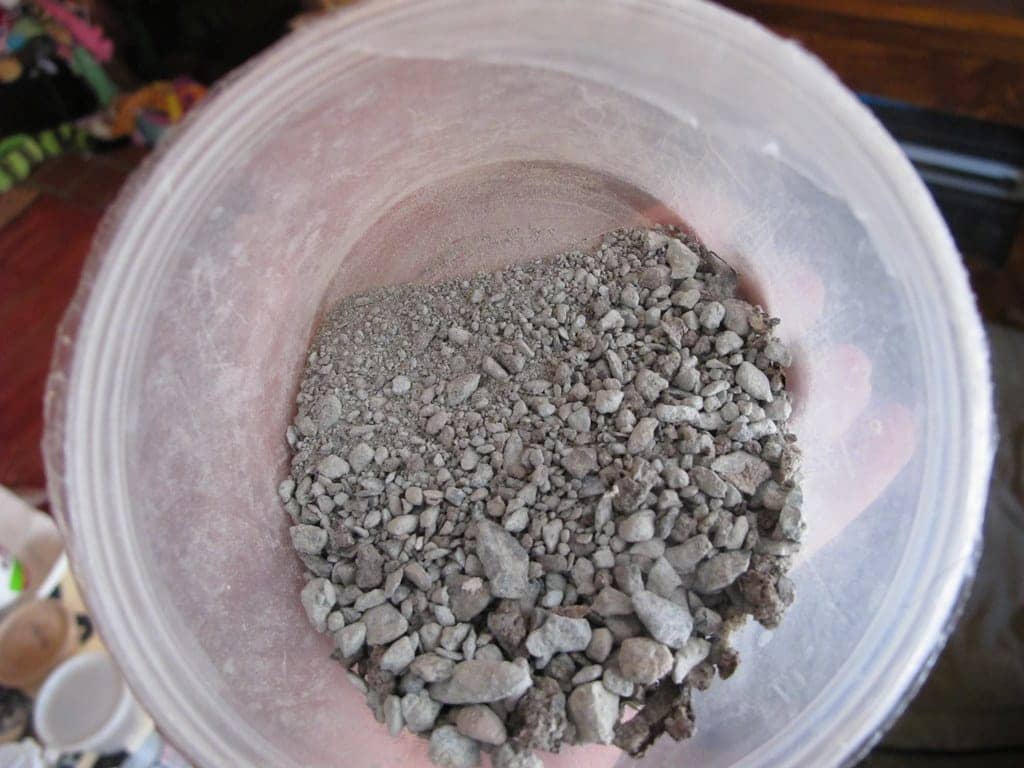
While shy on nitrogen and phosphorus, granite dust gifts long-lasting trace nutrients to help your garden thrive. Let granite’s vibrant crystals crumble into a patient fertilizer that sustains plant health with a subtle, lasting touch.
10. Sawdust

Sawdust is the residual scrap dust left over from wood-cutting machinery (e.g., electric table saws in carpentry or commercial sawmills).
Sawdust has additional uses besides particle board and mulch, such as fertilizer. Sawdust has a weight percentage of 2% to 4% potassium when used as fertilizer.
Additionally, sawdust has very little nitrogen (less than 0.1%) and phosphorus by weight.
Sawdust works for two to four years, with a very slow release time.
11. Soybean Meal
Warm, nourishing soybean meal does double duty, bringing health to both people and animals. To make this versatile meal, first, the oil is gently pressed from the soybeans, coaxing forth their golden liquid while keeping the goodness of the beans intact. Sometimes, the fuzzy husks are also ground and added, boosting fibre and texture.
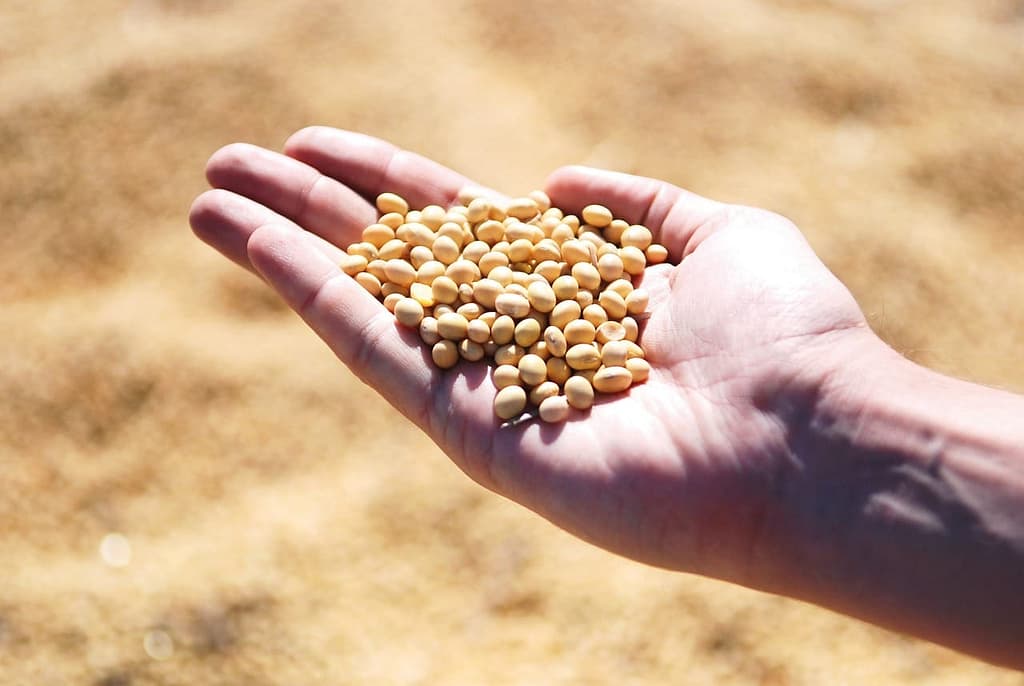
But soybean meal’s gifts don’t stop there. This wholesome meal also makes an exceptional fertilizer for your garden. Containing 2.4% potassium, 6.5% nitrogen, and 1.5% phosphorus, it provides a balanced feast for plants. Soybean meal nourishes the soil slowly and steadily, ensuring your garden thrives long-term.
So consider soybean meal a true superfood – for your family, your animals, and your garden! Its mild, steady nature brings comfort and nourishment wherever it goes.
12. Alfalfa (Lucerne)
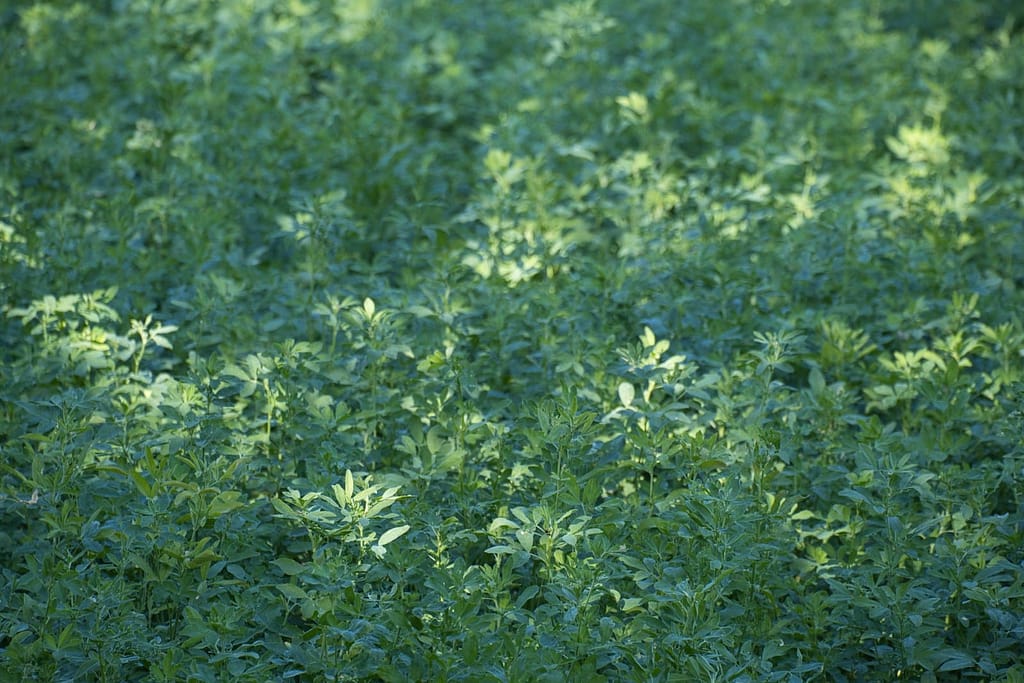
Alfalfa, that friendly flowering plant we affectionately call Lucerne, brings life to the soil. This cheery legume nurtures special bacteria on its roots, enabling it to draw nitrogen from the air and transform it into plant food. What a generous gift from nature!
When alfalfa’s time in your garden is through, pay it forward by tilling its remains back into the earth. This infuses the ground with 2% potassium, 2.5% nitrogen, and 0.5% phosphorus by weight – not even including the extra nitrogen its bacteria buddies provided!
Alfalfa keeps giving, too, releasing nutrients slowly over 2 to 6 months. Like a warm hug for your garden, alfalfa’s effects linger. What a delightful way to boost your soil’s health!
13. Bat Guano
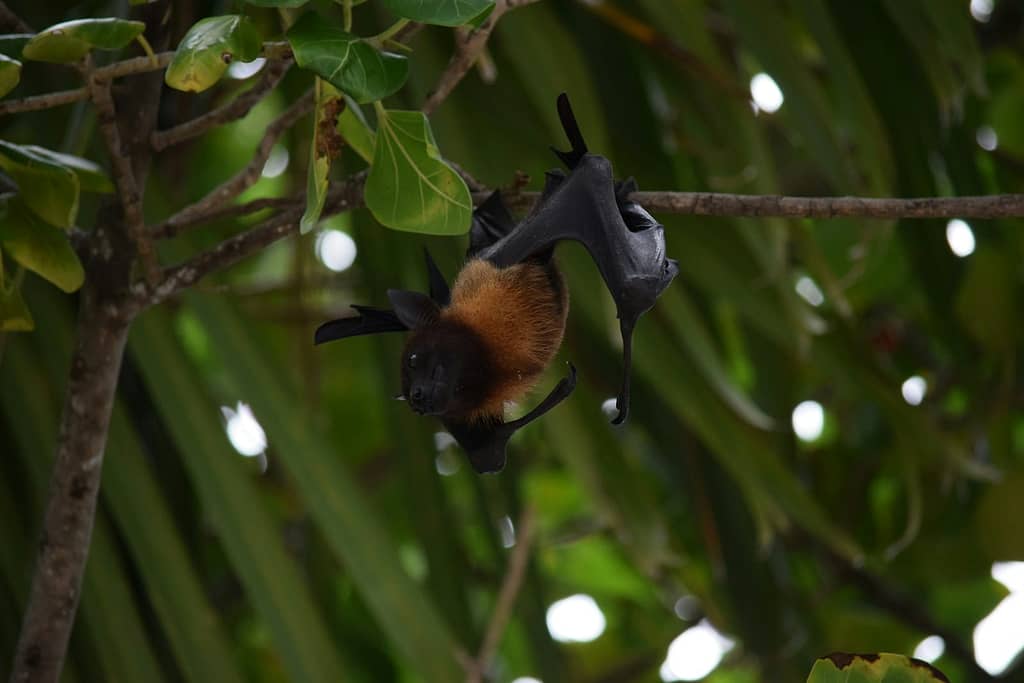
Bats and seabirds leave behind a valuable treasure for gardeners: guano. This natural fertilizer is the stuff that dreams are made of! Bat guano, in particular, contains a hearty helping of essential nutrients for your plants. With 1.5% potassium, 5.5-8% nitrogen, and 4-8.6% phosphorus, bat guano delivers a powerful nutritional punch.
Now, you may be wondering where to get your hands on this liquid gold. Unless you’re Indiana Jones, hunting down bat caves is probably not in the cards. Luckily, you can easily purchase high-quality bat guano online or at your local garden store. A little goes a long way with this potent natural fertilizer.
When using bat guano, keep in mind that it has a low pH and is quite acidic. This can burn plants if overapplied. Mix it into compost or only use it directly in alkaline soils to dilute the acidity. Bat guano releases nutrients steadily over 1-2 months, giving your plants a gentle, long-lasting feeding.
Here’s a fascinating fact: over many years, layered deposits of bat guano can fossilize into rock phosphate! This just shows that bat poop is a sustainable, renewable resource that can enrich your garden for generations to come. With the right care, bat guano provides a safe, organic way to grow robust, healthy plants.
14. Manure
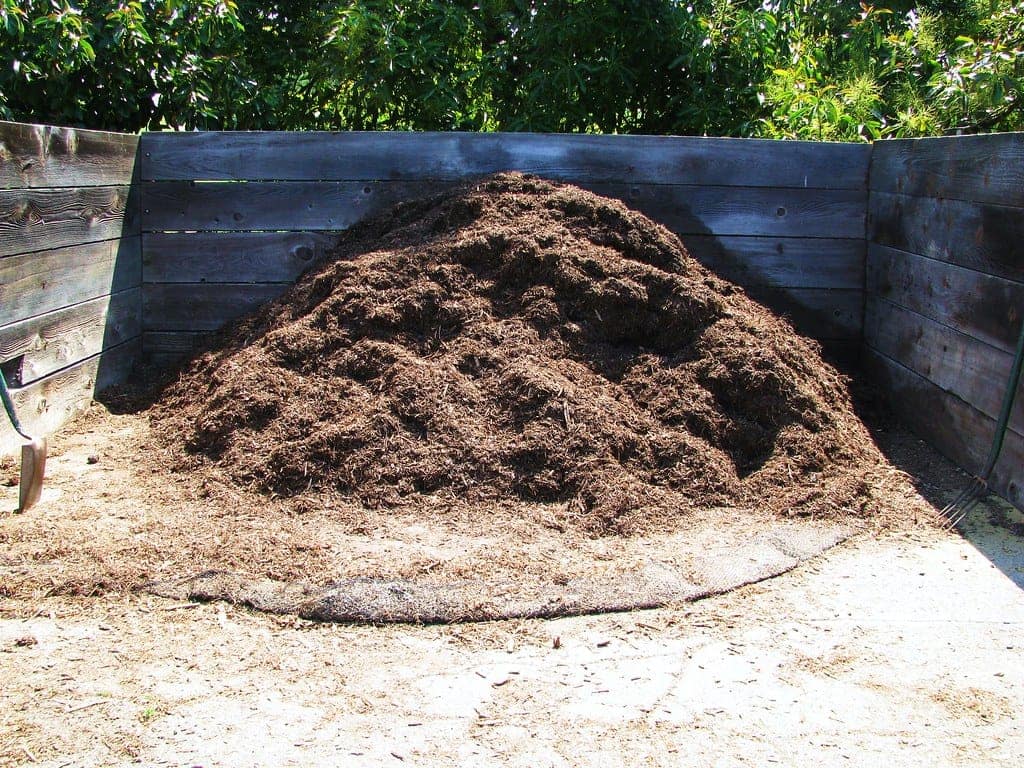
When it comes to nourishing your garden, manure can be a gardener’s best friend! Though it may not smell the prettiest, manure provides a bounty of nutrients to help your plants thrive. Cow and horse manure tend to offer a hug of potassium, with around 0.5% to 2% by weight. Pig manure gives a slightly smaller squeeze of potassium, typically 0.4% to 1.2%. Chicken manure wraps your plants in the biggest bear hug, with 0.5% to 3% potassium by weight.
All these manures release their nutrients steadily over two years, like a warm, comforting blanket for your garden. And they provide small sprinkles of nitrogen and phosphorus, too, making them well-rounded plant foods. Just be sure to let the manure decompose fully before digging it into your vegetable patches and flower beds so it doesn’t burn your plants with its rich intensity.
With a little manure, you can spread love and nourishment through your whole garden!
15. Compost
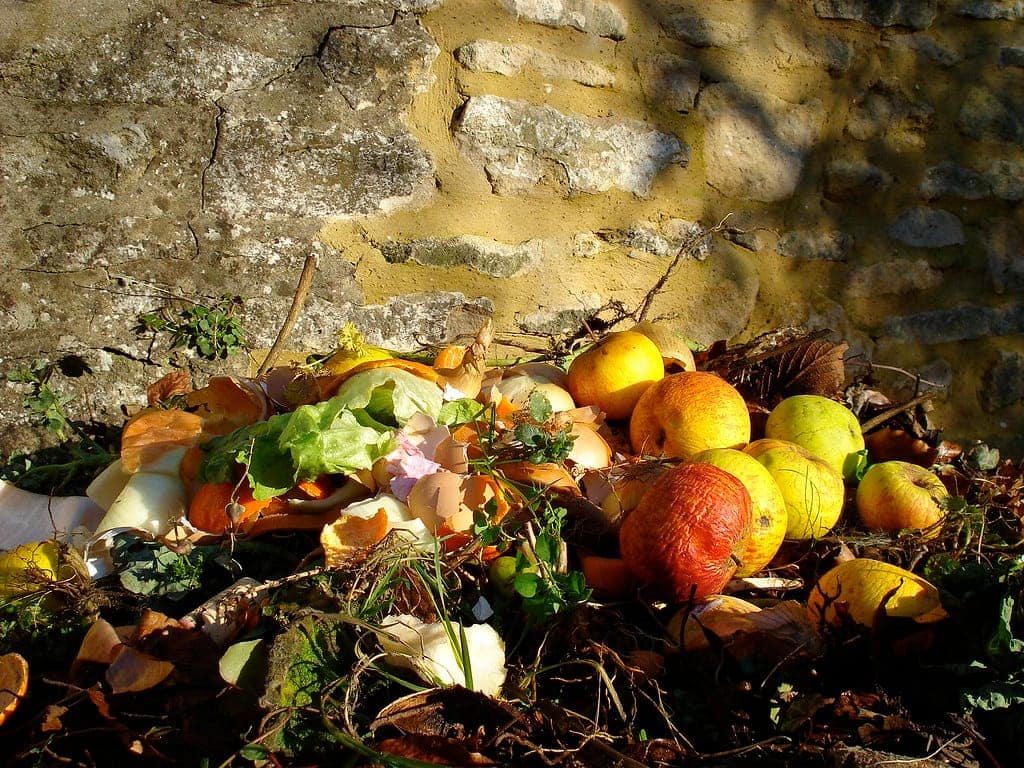
Compost is nature’s gift, crafted right in your own backyard. Born from leftover banana peels, orange rinds, grass clippings, and fallen leaves, compost gives back to your garden in the most nourishing way. This dark, earthy matter contains a bounty of nutrients – 1% to 2% potassium, along with nitrogen and phosphorus. Compost nurtures plants gradually, steadily releasing its goodness into the soil. Better yet, making compost couldn’t be easier. Simply pile up your kitchen scraps and yard waste, let them mingle together, and nature takes care of the rest. Like a warm hug for your garden, homemade compost is a cozy, loving way to help your plants thrive.
Which Is The Most Common Potassium Fertilizer?
When it comes to potassium fertilizers, potassium chloride reigns supreme. Though plain-old KCl may sound boring, this budget-friendly fertilizer packs a powerful punch, delivering a whopping 60% to 62% pure potassium. It’s no wonder potassium chloride accounts for over 90% of potassium fertilizer sales in the U.S. and Canada!
But potassium sulfate is a rising star in the fertilizer world. At only 6% of the market, this pricier potassium source has plenty of room to grow. What makes potassium sulfate stand out? It serves up the same knockout dose of potassium as potassium chloride, with the added bonus of sulfur. For plants that need a little sulfur boost, potassium sulfate is a godsend.
And let’s not forget the other potassium all-stars waiting in the wings: potassium-magnesium sulfate, potassium thiosulfate, and potassium nitrate. These speciality fertilizers feature the same starring ingredient – potassium – with supporting roles played by magnesium, sulfur, and nitrogen.
When it comes to feeding your plants the potassium they crave, you’ve got options. Whether you choose tried-and-true potassium chloride or opt for one of its more niche costars, you can feel confident knowing your fertilizer choice is a blockbuster hit.
How Can Potassium Be Added To Soil Quickly?
When it comes to nurturing your garden, we all want the best for our plants. I know you’re eager to give your crops that potassium boost they need to thrive. But take it slow with the potassium chloride, friend. An overload of nutrients can shock those tender roots.
Instead, let’s add potassium gradually, with a little splash of loving care with each watering. This gentle approach will let those thirsty plants drink up just what they need. And for our salt-sensitive darlings like sweet strawberries and delicate cucumbers, potassium chloride may be too harsh. We’ll find a kinder way to treat them right.
Growing a bountiful garden takes patience and a soft touch. With time and care, you’ll see the fruits of your labour flourish. So go slowly, listen to your plants, and shower them with love. That’s the secret to helping your garden glow.
Does a liquid potassium fertilizer exist?
If you decide to go that route, there are several formulas of liquid fertilizers with high potassium available, such as:
- AgroLiquid
- Ferticell
- Wallace Organic Wonder
Can Soil Contain Too Much Potassium?
My friend, too much of anything can throw things out of balance, even good things like potassium. An overabundance in your soil may seem helpful, but it can actually prevent your plants from absorbing other critical nutrients they need, like nitrogen, calcium and magnesium.
So take it from me: get a soil test first before adding any supplements. Make 100% sure there’s truly a potassium deficiency before using high-potassium additives.
A soil test will let you know if your soil’s too acidic or basic. Super helpful for picking the right supplements!
I know you want the best for your garden. With a little care and wisdom, you’ll keep your soil perfectly nourished. Wishing you a bountiful harvest!
Does Potassium Exist in Epsom Salt?
I know it can be confusing, but Epsom salt doesn’t actually contain any potassium. Its chemical name is magnesium sulfate, which reveals its true ingredients – just magnesium, sulfur, and oxygen. I know; it seems like it should have potassium in it! But alas, Epsom salt is not the potassium source our plant friends are looking for. The good news is it still has some benefits for plants and gardens. Magnesium and sulfur provide important nutrients. And Epsom salt can help improve soil drainage and aeration.
So, while it may lack potassium, a dash of Epsom salt can still do your plants some good. Hopefully, this clears up the mystery around Epsom salt! Let me know if you have any other garden questions.
Concluding:
We’ve come a long way in our journey together. Now, you’re equipped with valuable knowledge about fertilizers with high potassium – both natural and synthetic ones. You’ve learned to look beyond just nutrient content and consider the release time, too. Armed with these insights, you can now pick the perfect fertilizers to nourish your garden. I’m proud of how much you’ve learned! With your newfound wisdom, you’ll watch your plants thrive as you care for them with just the right nutrients at just the right time. The garden you’ve lovingly tended is sure to reward you with bountiful blooms and healthy growth.
Share this guide if you found it helpful so others can learn about fertilizers with high potassium .

